It looks like you're using an Ad Blocker.
Please white-list or disable AboveTopSecret.com in your ad-blocking tool.
Thank you.
Some features of ATS will be disabled while you continue to use an ad-blocker.
share:
In the Spanish province of Cuenca, near the town of Cañete is a hill known as El Cabezuelo which some have taken to referring to (at least now) as
the "Pyramid of Cañete." Late last year, a few mostly Spanish language news sources reported on the story of an "amateur archaeologist" by the name
of Manuel Abril who claims that El Cabezuelo is actually a pyramid of ancient origin.
I first learned of this last night from a post on a particularly fringe-y "forbidden archaeology" related blog that also made reference to the "Bosnian Pyramids" which was just about enough to discourage me from further reading but the included pictures looked interesting and so I decided to do a little digging and I was able to find a few sources. Bear with me folks, I will be aggregating details from a handful of Google translated Spanish news sources.
From what I have been able to gather, Abril says he first surveyed the hill in 2011 while independently inventorying regional historical sites after losing his job at the local tourism office. Believing he'd discovered something remarkable, Abril reportedly brought a geologist to the site and consulted with an archaeologist. Given the geography of the region, the geologist informed Abril that the hill could have formed naturally. The archaeologist suggested based on the tentative description that the hill could have been completely natural though modified in antiquity as part of a fortification. Basically, neither expert suggested there was any validity to Abril's pyramid hypothesis.
Undeterred, Abril continued his investigation and this is where things get potentially interesting but also where Abril demonstrates a foolish and frankly, selfish (if not outright immoral) disregard for the potential cultural heritage value of the site as well as what professional archaeologists might learn through proper excavation of an undisturbed site.
After discovering a hole on the top of the hill, Abril took it upon himself to conduct amateur excavations of the hill top. I cannot stress enough what a bad idea this is but it's done now. He has reportedly discovered artifacts identified (I assume by Abril) as flaked flint objects, an Iberian coin, shards of Roman ceramics and something else that wasn't quite clear from the translation ("account of a trinket"). He also has uncovered what he claims are are the top three tiers of a stone stepped pyramid.
According to Abril, having found these items he has suspended his amateur excavations, presented the artifacts to the mayor and claims that it was only ever his intention to bring attention to the site. The affair has cause something of a stir with archaeologists not only criticizing Abril's actions criminal but also denouncing a news program and it's presenters for advocating plundering. It has also since come to light that the site was initially identified and cataloged as part of a national program in the 1960's-70's called 'Rescue Mission' which involved teams of students working under the guidance of archaeologists. It's also been revealed that the site has been protected (legally) since 2004 and is part of the Inventory of Cultural Heritage of Castilla-La Mancha and the Plan of Urban Land Delimitation Cañete (translated from Spanish by Google).
Voces de Cuenca - The site of the 'Pyramid of Cañete' could be the third century. C. and was discovered in the 70s:
I first learned of this last night from a post on a particularly fringe-y "forbidden archaeology" related blog that also made reference to the "Bosnian Pyramids" which was just about enough to discourage me from further reading but the included pictures looked interesting and so I decided to do a little digging and I was able to find a few sources. Bear with me folks, I will be aggregating details from a handful of Google translated Spanish news sources.
From what I have been able to gather, Abril says he first surveyed the hill in 2011 while independently inventorying regional historical sites after losing his job at the local tourism office. Believing he'd discovered something remarkable, Abril reportedly brought a geologist to the site and consulted with an archaeologist. Given the geography of the region, the geologist informed Abril that the hill could have formed naturally. The archaeologist suggested based on the tentative description that the hill could have been completely natural though modified in antiquity as part of a fortification. Basically, neither expert suggested there was any validity to Abril's pyramid hypothesis.
Undeterred, Abril continued his investigation and this is where things get potentially interesting but also where Abril demonstrates a foolish and frankly, selfish (if not outright immoral) disregard for the potential cultural heritage value of the site as well as what professional archaeologists might learn through proper excavation of an undisturbed site.
After discovering a hole on the top of the hill, Abril took it upon himself to conduct amateur excavations of the hill top. I cannot stress enough what a bad idea this is but it's done now. He has reportedly discovered artifacts identified (I assume by Abril) as flaked flint objects, an Iberian coin, shards of Roman ceramics and something else that wasn't quite clear from the translation ("account of a trinket"). He also has uncovered what he claims are are the top three tiers of a stone stepped pyramid.
According to Abril, having found these items he has suspended his amateur excavations, presented the artifacts to the mayor and claims that it was only ever his intention to bring attention to the site. The affair has cause something of a stir with archaeologists not only criticizing Abril's actions criminal but also denouncing a news program and it's presenters for advocating plundering. It has also since come to light that the site was initially identified and cataloged as part of a national program in the 1960's-70's called 'Rescue Mission' which involved teams of students working under the guidance of archaeologists. It's also been revealed that the site has been protected (legally) since 2004 and is part of the Inventory of Cultural Heritage of Castilla-La Mancha and the Plan of Urban Land Delimitation Cañete (translated from Spanish by Google).
Voces de Cuenca - The site of the 'Pyramid of Cañete' could be the third century. C. and was discovered in the 70s:
The site of the ' Pyramid of Cañete ' was discovered in the 70s and houses some remains would be dated to the third century BC. These two data were provided by the archaeologist José Vicente Pérez de la Sierra, which communicated by letter to Joseph Benedict's first biographer Marco Pérez, which in turn has unveiled told Vocesdecuenca.es .
Sierra quote chapter 'A new historical space: The process of Romanization in Castilla-La Mancha', signed by Ruby Sanz Gamo, extracted from the collective book 'Castilla-La Mancha in Roman and Late Antiquity' the Editorial Almud. The book was coordinated by the Cuenca Angel Fuentes Dominguez, a professor of archeology at the Autonomous University of Madrid, and in this, Sanz Gamo states that "the Celts populous III century BC kept characters originated in former times, among which citing the walls adapted to the topography, raised by two vertical walls with internal padding ... stone ... This type of defensive structures spread throughout the province of Cuenca, the cyclopean walls in Cañete ... ".
According to the archaeologist, "this somewhat vague reference because it does not mention the name of the site to which it refers, without doubt oppidum (fortified hill, in Latin) is the behind of a white house by the river, to the right of the Cuenca-Utiel, address Cañete road when it is accessed from passing through Fuentelespino and leaves a Boniches side. "
edit on 2016-2-16 by theantediluvian because: (no reason
given)

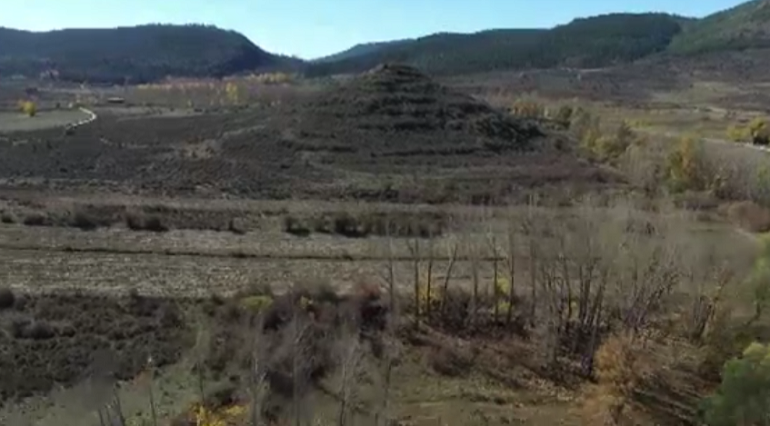
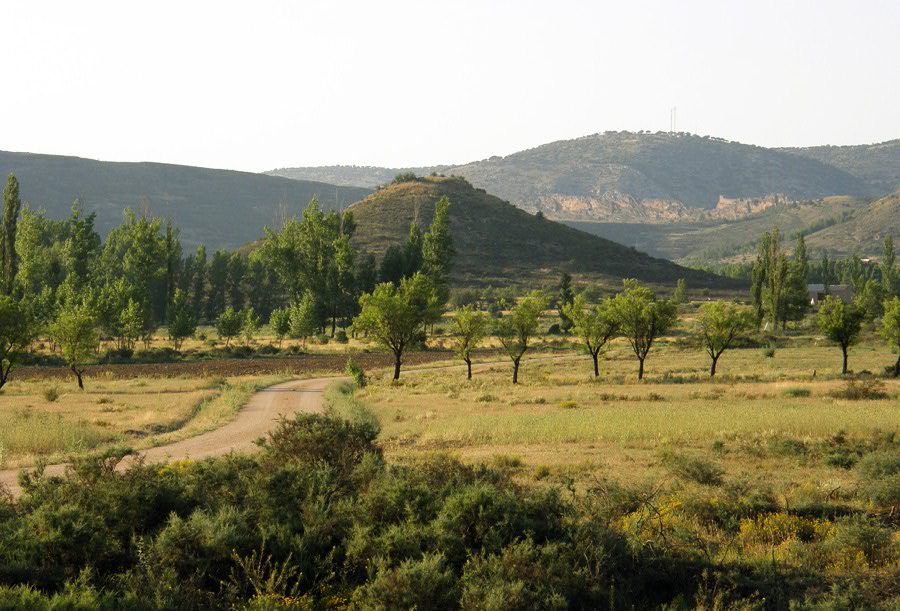

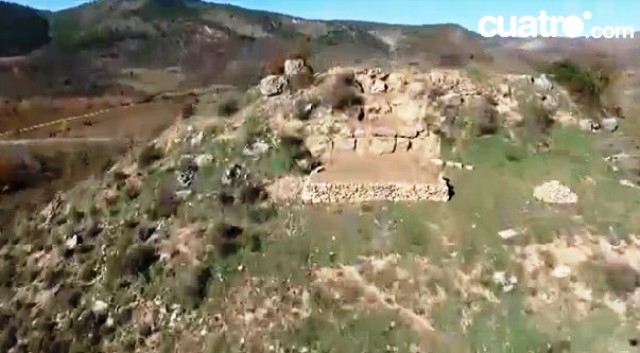
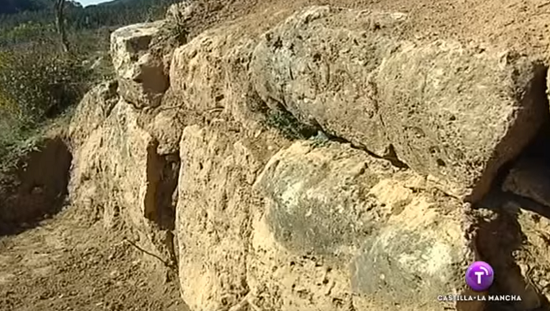
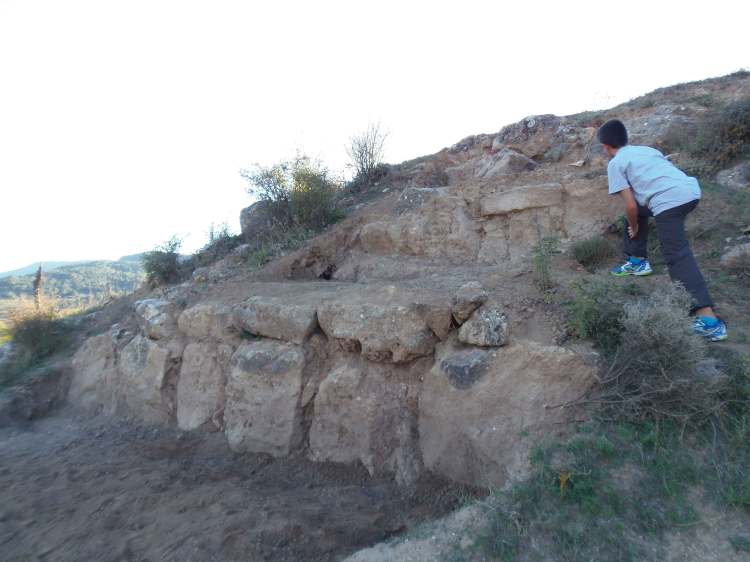
Sources - Spanish (untranslated):
Cuarto Milenio (Fourth Millenium) - 'Cuarto Milenio' travel to Cuenca to discover what hides the hill of El Cabezuelo
Voces de Cuena - Cañete unearthed in archaeological remains that could be part of a prehistoric pyramid
V oces de Cuena - Fourth Millennium archaeologists accuse of doing "advocacy of plundering" the 'Pyramid of Cañete'
historiayarqueologia.com #1
historiayarqueologia.com #2
Source - Italian (also untranslated):
Segnidalcielo - Sensational discovery in Spain: in the Cuenca region of an amateur archaeologist has discovered the first Spanish pyramid
Thanks for the info. I actually live quite near to Cuenca but haven't heard of the pyramid before now. Might have to take a weekend jaunt and check it
out for myself.
nice hill.
reminds me of that fraudster in bosnia, charging people to dig into a hill he claims is a pyramid.
reminds me of that fraudster in bosnia, charging people to dig into a hill he claims is a pyramid.
originally posted by: stinkelbaum
nice hill.
reminds me of that fraudster in bosnia, charging people to dig into a hill he claims is a pyramid.
I had the same thought when I read the initial blog post and saw the reference to the "Bosnian Pyramid" sham but at the very least, this site apparently showed evidence of having been modified in antiquity when it was surveyed previously. I tend to believe the stated opinion that it's probably a hill with some level of fortification simply because there's no precedent for anything else in Spain and so it's a far more likely conclusion — but it's really difficult to say definitively without proper study.
How much modification before a hill becomes an earthen pyramid?
I can think of a few examples of hills that are actually pyramids:
This pyramid at Tucume (Peru) doesn't look like much here:
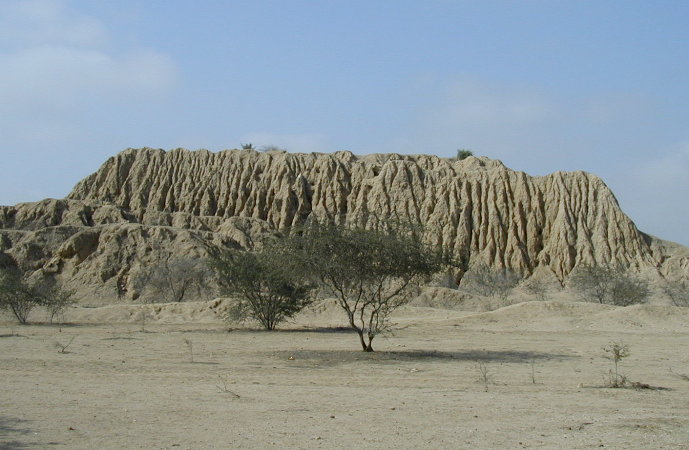
But you can see from this aerial photo that there's something more going on at Tucume:
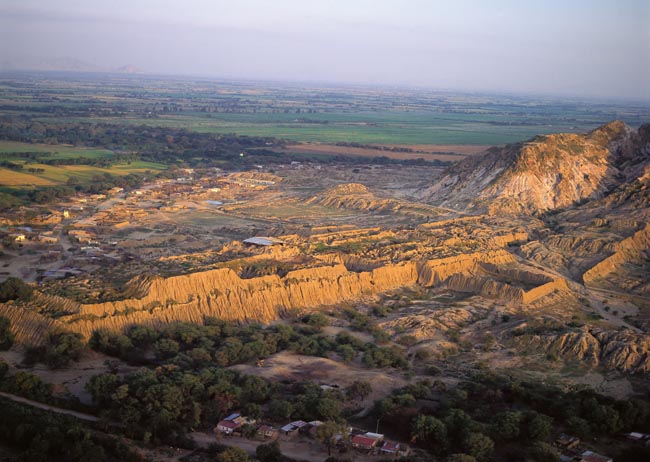
and when you look at some parts, you can still see the mud bricks that haven't completely eroded:
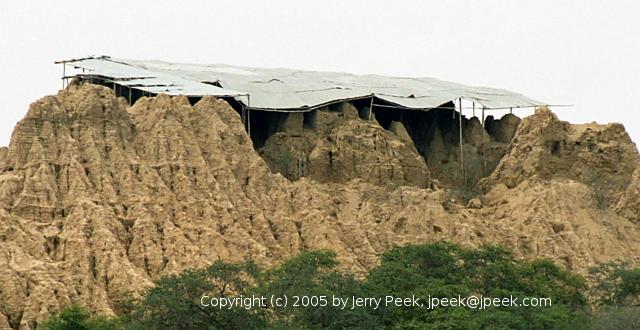
This is an unexcavated Mayan pyramid and there's quite a few of these poking up out of the jungle:
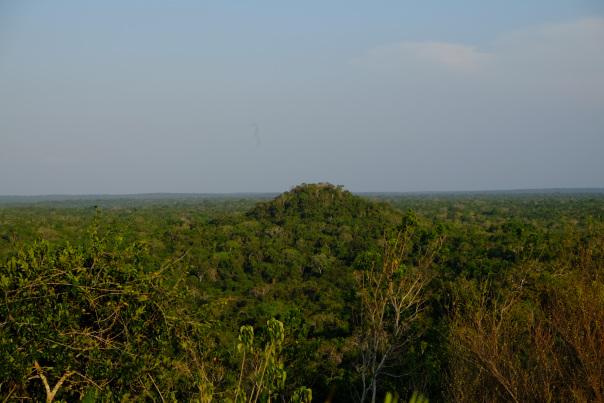
Here's a picture of the Pyramid of the Moon at Teotihuacan before excavation:
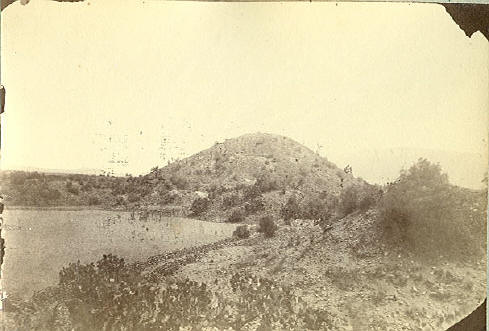
Alright, that's enough picture spamming for me!
What is it with people and pyramids?
Perhaps it's that there's so few gothic cathedrals in nature but lots and lots of natural hills that could be (if you look at them just right and from the right angle) suggested as pyramids.
No pyramid there, but there's definitely archaeological remains there. I hope they can get a team up there before he strips the soil down to the bedrock.
Perhaps it's that there's so few gothic cathedrals in nature but lots and lots of natural hills that could be (if you look at them just right and from the right angle) suggested as pyramids.
No pyramid there, but there's definitely archaeological remains there. I hope they can get a team up there before he strips the soil down to the bedrock.
originally posted by: theantediluvian
This pyramid at Tucume (Peru) doesn't look like much here:
But you can see from this aerial photo that there's something more going on at Tucume:
Awesome find.
First off,
In reference to the above posted pyramids, Some of the grander ones in the area were mauled by the Spanish diverting rivers to wash away the outer layers in search of....yup....Gold.
Second, I'm pretty convinced that Spain has a history that has of yet been fully explored and understood. Being where it's located at the mouth of the Med leading out in the Atlantic, It was used way back in prehistory as a stop along coastal travels. Some have theories that somewhere along it's coast was a very ancient city wealthy from maritime trade in prehistory and was the actual bases for the whole Atlantis myth. It being wiped clean by a Tsunami long before even the Minoans, Phoenicians and maybe were somehow connected to one of my favorite site, Malta.
Pure speculation of course..
Theres an older thread on the topic here at ATS, I searched, but couldn't find anything, I might not be using the correct terms.
originally posted by: reddragon2015
bro that is a hill and a weak one at that
Its a pyramid, you can only see the top of it, the rest was buried during the great flood of noah, or something....
Love the pics.
Peru is top of the list for future trips.
I studied abroad in Guatemala and loved it. When I was at Tikal they said something like 90% of the city was un-excavated, and just wandering through the jungle one could see all manners of hills/mounds with bricks and remains protruding out of them.
Teotihuacan is amazing too. Spent several days at the archaeological ranch there. I wish we could have seen Tenochitla (Aztec capital under Mexico City) before the Spanish basically razed it.
Peru is top of the list for future trips.
I studied abroad in Guatemala and loved it. When I was at Tikal they said something like 90% of the city was un-excavated, and just wandering through the jungle one could see all manners of hills/mounds with bricks and remains protruding out of them.
Teotihuacan is amazing too. Spent several days at the archaeological ranch there. I wish we could have seen Tenochitla (Aztec capital under Mexico City) before the Spanish basically razed it.
a reply to: theantediluvian
Once upon a time I lived in Spain. There is so much that is unknown and yet to be revealed. Take Itálica as one example. What has been exposed of the ancient Roman city is extraordinary ... but very little has been revealed and who knows what lieth beneath the sod.
There are also the inexplicable figurines and statuary like La Dama de Elche that in spite of what one reads on Wikipedia, no one really knows what culture produced these images of "the Lady" and whether or not they have anything to do with Phoenicians, Greeks, or the goddess Tanith.
This site near Cuenca merits careful study, and with all of the financial difficulties in Spain I hope that proper funding and oversight can be provided for future archaeological study.
Once upon a time I lived in Spain. There is so much that is unknown and yet to be revealed. Take Itálica as one example. What has been exposed of the ancient Roman city is extraordinary ... but very little has been revealed and who knows what lieth beneath the sod.
There are also the inexplicable figurines and statuary like La Dama de Elche that in spite of what one reads on Wikipedia, no one really knows what culture produced these images of "the Lady" and whether or not they have anything to do with Phoenicians, Greeks, or the goddess Tanith.
This site near Cuenca merits careful study, and with all of the financial difficulties in Spain I hope that proper funding and oversight can be provided for future archaeological study.
a reply to: Byrd
I believe you answered your own question in part at a least — ancient structures engineered to stand through the eons necessarily have characteristics in common with natural features that persist through the eons against the very same forces. It's evolutionary convergence.
In many cases like the "Bosnian Pyramids" or Gunung Padang, national and ethnic pride seems to contribute considerably to wishful thinking (or worse, willful ignorance) as well.
That said, I'd say the odds that there is an actual stone step pyramid buried in that hill are ridiculously low but then again, the line between earthen pyramid and platform mound seems fairly arbitrary to me. Consider the Cahokia Mounds which are sometimes counted among the world's pyramids or the Pyramid of Austerlitz built by Napoleon's soldiers.
I believe you answered your own question in part at a least — ancient structures engineered to stand through the eons necessarily have characteristics in common with natural features that persist through the eons against the very same forces. It's evolutionary convergence.
In many cases like the "Bosnian Pyramids" or Gunung Padang, national and ethnic pride seems to contribute considerably to wishful thinking (or worse, willful ignorance) as well.
That said, I'd say the odds that there is an actual stone step pyramid buried in that hill are ridiculously low but then again, the line between earthen pyramid and platform mound seems fairly arbitrary to me. Consider the Cahokia Mounds which are sometimes counted among the world's pyramids or the Pyramid of Austerlitz built by Napoleon's soldiers.
a reply to: theantediluvian
Anyone ever made an experiment with a foursided pyramide without any reference to Aliens?
Very little in ancient time seperated us from the solar system, today, wow, we live so far up our imagination nothing makes sense
Anyone ever made an experiment with a foursided pyramide without any reference to Aliens?
Very little in ancient time seperated us from the solar system, today, wow, we live so far up our imagination nothing makes sense
a reply to: SLAYER69
I wasn't aware of that but it's not surprising. Cortes leveled Tenochtitlan and the Spanish built right on top of its ruins.
I believe what you're referring to is the identification of the lost city of Tartessos as a potential inspiration for Plato's Atlantis and the possible location of Tartessos in what is now Parque Nacional de Doñana?
In reference to the above posted pyramids, Some of the grander ones in the area were mauled by the Spanish diverting rivers to wash away the outer layers in search of....yup....Gold.
I wasn't aware of that but it's not surprising. Cortes leveled Tenochtitlan and the Spanish built right on top of its ruins.
Second, I'm pretty convinced that Spain has a history that has of yet been fully explored and understood. Being where it's located at the mouth of the Med leading out in the Atlantic, It was used way back in prehistory as a stop along coastal travels. Some have theories that somewhere along it's coast was a very ancient city wealthy from maritime trade in prehistory and was the actual bases for the whole Atlantis myth. It being wiped clean by a Tsunami long before even the Minoans, Phoenicians and maybe were somehow connected to one of my favorite site, Malta.
I believe what you're referring to is the identification of the lost city of Tartessos as a potential inspiration for Plato's Atlantis and the possible location of Tartessos in what is now Parque Nacional de Doñana?
a reply to: geezlouise
No bodies underneath, oooh sry, "Byrd" is in here, Humans are peaceful and loving creatures, they didnt have enough manure...........
No bodies underneath, oooh sry, "Byrd" is in here, Humans are peaceful and loving creatures, they didnt have enough manure...........
new topics
-
Where should Trump hold his next rally
2024 Elections: 1 hours ago -
Shocking Number of Voters are Open to Committing Election Fraud
US Political Madness: 2 hours ago -
Gov Kristi Noem Shot and Killed "Less Than Worthless Dog" and a 'Smelly Goat
2024 Elections: 3 hours ago -
Falkville Robot-Man
Aliens and UFOs: 3 hours ago -
James O’Keefe: I have evidence that exposes the CIA, and it’s on camera.
Whistle Blowers and Leaked Documents: 4 hours ago -
Australian PM says the quiet part out loud - "free speech is a threat to democratic dicourse"...?!
New World Order: 4 hours ago -
Ireland VS Globalists
Social Issues and Civil Unrest: 5 hours ago -
Biden "Happy To Debate Trump"
2024 Elections: 5 hours ago -
RAAF airbase in Roswell, New Mexico is on fire
Aliens and UFOs: 5 hours ago -
What is the white pill?
Philosophy and Metaphysics: 7 hours ago
top topics
-
A Warning to America: 25 Ways the US is Being Destroyed
New World Order: 15 hours ago, 21 flags -
Blast from the past: ATS Review Podcast, 2006: With All Three Amigos
Member PODcasts: 8 hours ago, 11 flags -
Biden "Happy To Debate Trump"
2024 Elections: 5 hours ago, 10 flags -
James O’Keefe: I have evidence that exposes the CIA, and it’s on camera.
Whistle Blowers and Leaked Documents: 4 hours ago, 9 flags -
Australian PM says the quiet part out loud - "free speech is a threat to democratic dicourse"...?!
New World Order: 4 hours ago, 9 flags -
Mike Pinder The Moody Blues R.I.P.
Music: 8 hours ago, 8 flags -
What is the white pill?
Philosophy and Metaphysics: 7 hours ago, 5 flags -
RAAF airbase in Roswell, New Mexico is on fire
Aliens and UFOs: 5 hours ago, 5 flags -
Ireland VS Globalists
Social Issues and Civil Unrest: 5 hours ago, 4 flags -
Putin, Russia and the Great Architects of the Universe
ATS Skunk Works: 11 hours ago, 4 flags
active topics
-
Putin, Russia and the Great Architects of the Universe
ATS Skunk Works • 27 • : KnowItAllKnowNothin -
Falkville Robot-Man
Aliens and UFOs • 5 • : Ophiuchus1 -
RAAF airbase in Roswell, New Mexico is on fire
Aliens and UFOs • 7 • : pianopraze -
Biden "Happy To Debate Trump"
2024 Elections • 42 • : JadedGhost -
Gold and silver prices....woo hoo
History • 86 • : lilzazz -
Mood Music Part VI
Music • 3110 • : TheDiscoKing -
University of Texas Instantly Shuts Down Anti Israel Protests
Education and Media • 308 • : cherokeetroy -
Meadows, Giuliani Among 11 Indicted in Arizona in Latest 2020 Election Subversion Case
Mainstream News • 29 • : Threadbarer -
Where should Trump hold his next rally
2024 Elections • 7 • : spacedoubt -
Shocking Number of Voters are Open to Committing Election Fraud
US Political Madness • 4 • : WeMustCare
